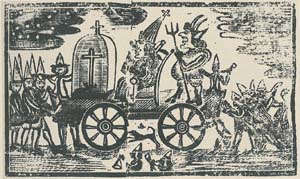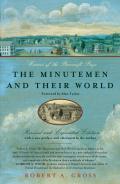And still speaking of
Horace Walpole,
Lady Louisa Stuart, daughter of the
Earl of Bute, had more to say about him.
In 1837, Lady Louisa wrote in the introduction to a volume of her grandmother
Lady Mary Wortley Montagu’s letters and works:
In a word, Horace Walpole himself was generally supposed to be the son of Carr Lord Hervey, and Sir Robert not to be ignorant of it. One striking circumstance was visible to the naked eye; no beings in human shape could resemble each other less than the two passing for father and son; and while their reverse of personal likeness provoked a malicious whisper. Sir Robert’s marked neglect of Horace in his infancy tended to confirm it.
All that would have happened well before Lady Louisa was born in 1757, so she was recording previous generations’ gossip.
The story starts with the rise of a couple of politicians in the last decades of the Stuart dynasty.
John Hervey (1665–1751) followed his father into
Parliament, then became Baron Hervey in 1703 and Earl of Bristol in 1714. By his first wife he had a son named Carr Hervey in 1691, and by his second a son named John Hervey in 1696.
After Hervey became Earl of Bristol, his eldest son and heir received the courtesy title of Lord Hervey based on the father’s lesser peerage. That meant Carr Hervey was called Lord Hervey from 1714 until his death in 1723. At that point the younger John Hervey became his father’s eldest son and thus also Lord Hervey until his own death in 1743. In fact, through a special law John Lord Hervey got to be
Baron Hervey in the House of Lords all on his own in 1733. But he never inherited his long-lived father’s earldom; instead, the
second Earl of Bristol was his son.
John Lord Hervey was a major figure during Walpole’s years in power, as a Member of Parliament, a political writer, and a close friend and then enemy of Frederick, Prince of Wales, father of
George III. Thus, when people remembered “Lord Hervey,” they usually meant him. Carr Lord Hervey didn’t leave such a big mark.
Meanwhile,
Robert Walpole (1676–1745) was climbing the political ranks as a Whig. He joined Parliament in 1701, served as chancellor of the exchequer 1715–1717, and then dominated Britain as prime minister from 1721 to 1742. He was knighted in 1725. As part of his exit deal, Walpole was kicked up into the House of Lords as the first Earl of Orford.
Robert Walpole married Catherine Shorter in 1700. They had four children soon after marriage, then none for eleven years until Horace appeared in 1717. By the late 1720s Sir Robert was living openly with his mistress, Maria Skerritt, and their affair probably began earlier. In 1737 Catherine Walpole died. Sir Robert then married Maria, but she died in 1739. Their daughter was retroactively made legitimate and became Lady Mary Walpole.
According to the rumor that Lady Louisa Stuart set down, Catherine Walpole had given up on her marriage because of her husband’s infidelities and took her own lover in Carr Lord Hervey. Horace Walpole was supposedly the result of that affair.
It’s true that Sir Robert Walpole and Horace Walpole didn’t look much alike. Sir Robert had a square chin while Horace always had a long, lean face. However, the
one surviving portrait of Carr Lord Hervey (shown above) depicts him as a youth with a completely round face, even less like Horace’s.
When people talked about how Horace Walpole resembled Lord Hervey, they usually end up pointing to the younger and more famous John Lord Hervey, not the paternity candidate. In particular, authors have pointed out two major similarities.
First, both Baron Hervey and Horace Walpole wrote gossipy, iconoclastic memoirs about the politics of their day. Hervey’s memoirs were so juicy that the family suppressed their publication until 1848. Therefore, unless he got a secret peek at that manuscript (and, even more improbably, managed to leave no record of that peek), Horace Walpole couldn’t have used the Hervey memoir as a model for his own.
The second similarity, which authors found different ways to express, is that both John Lord Hervey and Horace Walpole were queer.
For Hervey, this took the form of sex with both men and women. He had eight children with his wife; affairs with Anne Vane and perhaps Princess Caroline; infatuations or affairs with Henry Fox, Stephen Fox, Count Francesco Algarotti, and perhaps Prince Frederick. Lady Mary Wortley Montagu, another likely lover, declared, “this world consisted of men, women, and Herveys.”
Horace Walpole appears to have been attracted only to men, and it’s unclear whether he had any happy sexual relationships. He did have close friendships with many women, but they were all either married or uninterested in men. People saw Walpole as effeminate. The novelist
Laetitia Matilda Hawkins recalled:
His entrance into a room was in that style of affected delicacy, which fashion had made almost natural, chapeau bras between his hands as if he wished to compress it, or under his arm; knees bent, and feet on tip-toe, as if afraid of a wet floor.
Thus, when Horace Walpole scholar Peter Cunningham wrote in 1861, “he was unlike a Walpole, and in every respect, figure and formation of mind, very like a Hervey,” he meant mostly that neither Horace Walpole nor John Lord Hervey were straight.
But how significant was that supposed similarity to the question of Horace’s paternity? Baron Hervey was the putative father’s
half-brother. There was only a thin genetic connection between him and Horace Walpole, so their resemblances were likely no more than coincidence.
On the other hand, Horace Walpole was such a gossip that it’s only fair to have this sort of discussion about him.


_School_-_Lord_Carr_Hervey_(1691%E2%80%931723)%2C_as_a_Youth_-_851822_-_National_Trust.jpg/193px-British_(English)_School_-_Lord_Carr_Hervey_(1691%E2%80%931723)%2C_as_a_Youth_-_851822_-_National_Trust.jpg)







_-_BHC2808_-_Royal_Museums_Greenwich.jpg/220px-British_School_-_Captain_George_Johnstone_(1730%E2%80%931787)_-_BHC2808_-_Royal_Museums_Greenwich.jpg)








